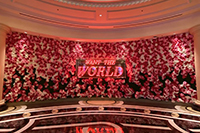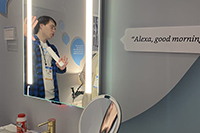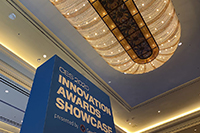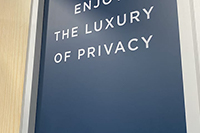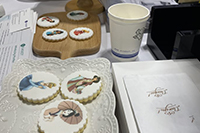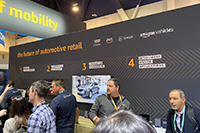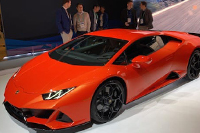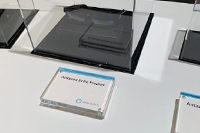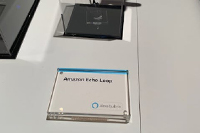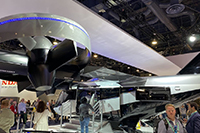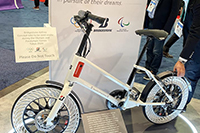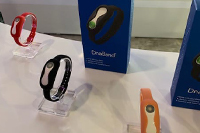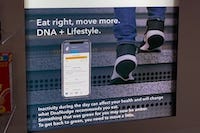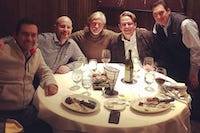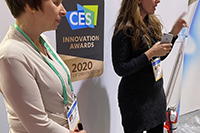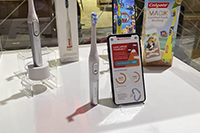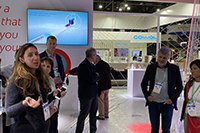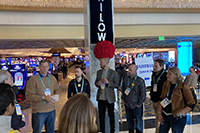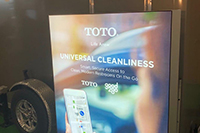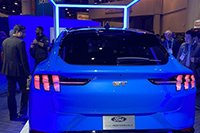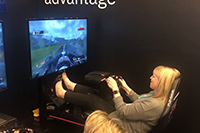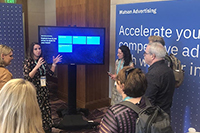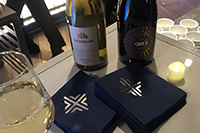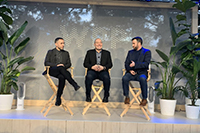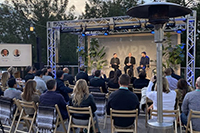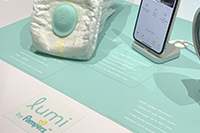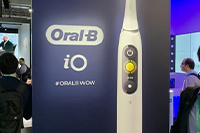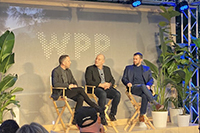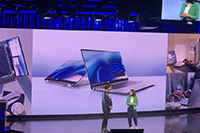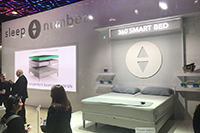VMLY&R CES

mmxx
Jan 7-10, 2020
Jeff's Letter
VMLY&R was pleased to be a part of CES 2020 — the global stage for innovation. A place where breakthrough technologies and ideas come about, are interacted with and celebrated. As a global company focused on creating connected brands for clients all over the world, there’s no question why we were there.
Together with our clients, we witnessed groundbreaking products that are changing our world – from robotics to AI to connected health technology. The showroom floor was filled with more than 170K attendees from all over the world and so, to get the most out of a week that can make your head spin and your feet sore, we curated a few key events.
- Our Chief Business Officer, Michael Stich, led multiple groups through the showroom floor on custom tours giving an insiders’ look at the latest and greatest.
- Our Innovation and Mobility team created in-depth tech immersions on two of the hottest topics this year – Esports and 5G.
- We had personalized meetings with our top partners.
- And I led a presentation on “Designing Brands for the Experience Era” along with our friends from Google and Forrester on the WPP Terrace. Together, we talked about the contemporary definition of CX and the convergence of technology and creativity to create a ‘total experience’ for consumers – taking into consideration products, services, communication, and everything in between.
- And on top of that, because it’s Las Vegas, we had some fun together, too. We celebrated with more than 100 of our VMLY&R friends at our ‘MMXX & Mingle’ event, and also Snoop Dogg at a mid-week Twitter event.
We hope this recap site with some of our key takeaways gives you a peek behind the convention center door and more. And helps energize you for the year and future ahead, just like it did for us.
Jeff Geheb
Global Chief Experience Officer
Key Takeaways
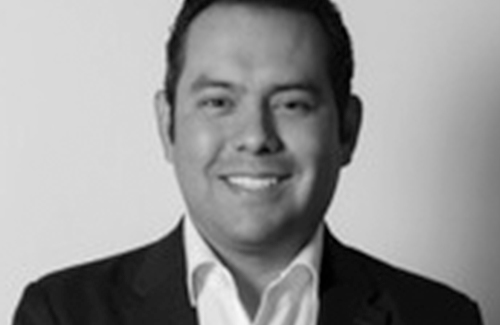
Alejandro de Luis
VP Integrated Production (Tech, Data & Prod), VMLY&R Mexico
Using the innovation & technology to improve our message
Was my first time in CES, is amazing the technology & innovation evolution, I was thinking, the future is near, but I was bad, the future is now and is demonstrating that we need to move very fast to...
Read MoreUsing the innovation & technology to improve our message
Was my first time in CES, is amazing the technology & innovation evolution, I was thinking, the future is near, but I was bad, the future is now and is demonstrating that we need to move very fast to improve and personalize our communication with our brand and our clients. Absolutely is an event for us and our clients, to understand the science of evolution and understand that we work in terms of transforming our and their business, I am proud to be in the position to visit this type of events, but more proud to share time with the amazing innovative people, and with my innovative and digital-native colleagues. We need to have creativity but understand how to apply in our business transformation to connect our brands.

Ann Carey
Managing Director
Every type of tech imaginable… Even potty-tech!
There is such an incredible array of amazing things to see at CES. I am fascinated by the range of innovation from the most useful to the more random.
Read MoreEvery type of tech imaginable… Even potty-tech!
There is such an incredible array of amazing things to see at CES. I am fascinated by the range of innovation from the most useful to the more random. Great improvements are being made in useful tech, such as more innovative and camouflaged hearing aids and tech to address sleep issues, ranging to the seemingly silly tech such as robots that can make recipes for you (doesn’t that take the fun out of it)? What I thought was an interesting use of technology to solve a true need is the partnership between TOTO and Good2Go (start up in CA).
As an answer to solving the problem of insufficient number of public restrooms in the U.S., Toto is using IOT to help people locate and access modern, hands-free restrooms from their phones. Through the app, consumers can locate and securely access these restrooms, be put in a virtual queue and be notified when it is their turn to use the facility. They are given a secure code that only they can use – this provides secure access AND privacy, that is almost always lacking in a public restroom. Retailers that install the TOTO Good2Go can also benefit by receiving feedback real-time on the conditions of the restroom and by enabling a smarter, more efficient way to maintain the quality of their restrooms.
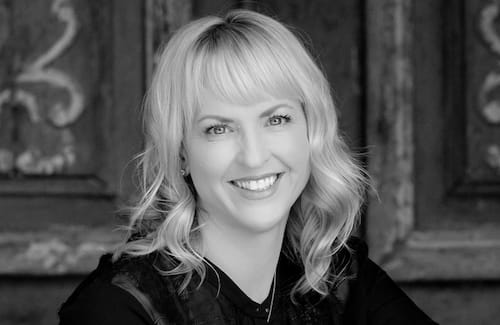
Beth Wade
Global Chief Marketing Officer
CES Is a Critical Part of the Advertising Industry’s Evolution
I was questioned many times by friends and family before heading to #CES2020 this year with “you are in advertising – why are you going”? The answer was simple.
Read MoreCES Is a Critical Part of the Advertising Industry’s Evolution
I was questioned many times by friends and family before heading to #CES2020 this year with “you are in advertising – why are you going”? The answer was simple. Technology is enabling a tighter relationship at every turn between brands and consumers. It is our responsibility as strategic marketers to understand all the ways we can and will be able to add value to a consumer’s life today and in the future.
Whether this is through a connected toothbrush (thanks Colgate) which identifies where I plaque to address to a motion pillow that alleviates snoring (this could save my marriage), technology is embedded in everything we do. If we are going to partner with brands in the experience era, it is our responsibility as advertisers and marketers to think through how technology can enhance and build our interactions, relationships and emotional connections each and every day. CES is a platform for our teams to get inspired for what is the future of brand experiences. I know I left energized and maybe a little tired as well…where is that motion pillow when you need it?
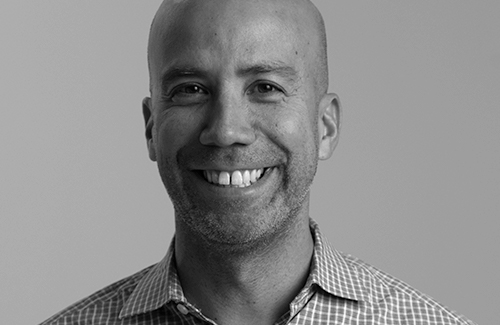
Brian Yamada
Chief Innovation Officer
Do you see the future?
In the beginning, CES was about product launches. A marketplace where electronic buyers and sellers came together, looking to cut deals. Success was measured in orders.
Read MoreDo you see the future?
In the beginning, CES was about product launches. A marketplace where electronic buyers and sellers came together, looking to cut deals. Success was measured in orders. There are still items that are ready to buy in the more mature categories — TVs with sharper, bigger screens or smaller bevels or flexible screens. Today’s CES looks markedly different. Its much more exploratory, much more conceptual than ever before. Some things, like Toyota’s Woven City (or even Sony’s PS5) can’t be experienced at all, just sharing a logo or a conceptual drawing and discussion the ideas.
Dell’s Alienware Concept UFO has PC gamers drooling over its potential, but its yet to be determined if its possible to develop at a reasonable price point.
And somewhere, amidst the 4500 exhibitors and 1200 startups lies a quantum leap forward. Something that will change lives. Perhaps create a new business model and a new Billionaire (or many). While it’s hard to separate the busts from the breakthroughs, the future is there for the relentlessly curious that want to shape it.
5G + AI – Tech’s invisible accelerants
CES 2020 once again heard a lot of talk about AI and 5G. We’re beginning to see each of them scale and become more valuable. And the tech is (thankfully) less visible to the eye. Samsung introduced its ‘Family Hub’ fridge initially at CES in 2016, but with additional sensors and powered by AI, the device can now “look” at the contents inside your fridge and make recommendations of recipes. Home Wi-Fi hardware provider Linksys is using AI to monitor changes in patterns of the Wi-Fi signals in your house.
The current mesh Wi-Fi hardware can monitor at a rate of 30 times per second, allowing to track things like unexpected intruders or a fall from an elderly resident. Later this year, Linksys will roll out their Wellness Pods, that will increase the monitoring rate to 1500 times per second, enabling much more precision monitoring such as breathing patterns while you sleep to detect sleep apnea. The talk of 5G moved from “coming soon” to “now here” and an array of 5G ready phones and devices are coming to market. As AI and 5G continue to evolve, we will continue to get more value with less effort – definitely accelerants for the experience era.
The personalized future of media
The impact of technology on media and entertainment is profound. Technologies have introduced new formats, delivery vehicles, and enable new business models. Case in point at CES this year was the announcement of Quibi. Led by entertainment and tech heavyweights Jeffrey Katzenberg (former head of Walt Disney Studios and co-founder of DreamWorks) and Meg Whitman (former CEO of HP and eBay), they have reportedly raised $1B in funding for the mobile-first, short-form video platform. They are following the DTC streaming business model that will sell for $5/month or $8/month for the ad free version. While Quibi will lack the backlog that Disney+ boasts at its streaming subscription launch, they have signed a stable of known Hollywood creators to make original content.
And they have a format innovation called “Turnstyle” that changes the content POV when you move your phone from portrait to landscape view. Like other tech before it, Turnstyle/Quibi enables a new set of choices for the creators – how can they use the second POV to augment their story and engage their audience – some have been reportedly giving audiences a first-person POV of a character, while others are building custom rigs for their cameras to capture in multiple dimensions. For years, the video experience has been a (mostly) linear one, allowing Play/Fast-Forward/Rewind as the means to navigate a story, largely as the creator intended it.
But the times and technologies are changing. Creators have a wider array of choices, powered by technology, to enable a wider array of experiences. Quibi is one example, but tomorrow’s storyteller can make more choices, and will be able to develop for a multidimensional and potentially a multi-versioned immersive experience where the video and the story may vary by who is watching (and their emotional response). The story might change based upon which jokes you laugh at, or which character you were most afraid might die. Netflix’s Black Mirror and other have taken initial steps in this journey, but the future of media and entertainment will continue to be written.
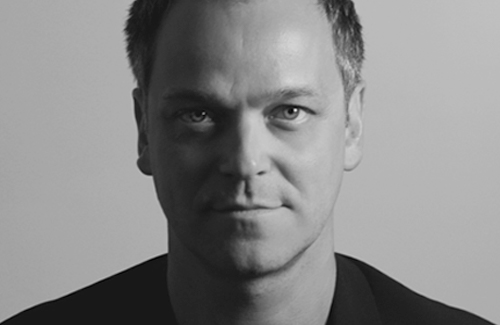
Chris Furse
Executive Director, Consumer Brands
The Future Feels Closer to Now Than Ever Before
For so long the promise of driverless cars, ambient computing, lightening fast data speeds, and flying cars (!) has been there for all of us to dream about.
Read MoreThe Future Feels Closer to Now Than Ever Before
For so long the promise of driverless cars, ambient computing, lightening fast data speeds, and flying cars (!) has been there for all of us to dream about. But for so long it has seemed that a world with such promise was never really going to happen - it was beginning to feel like a promise unfulfilled. And at this year’s CES it started to, for the first time, feel very real indeed.
The connected home feels like it’s actually happening now. The health and wellness field is exploding with potentially life changing technology application. And the automotive industry is literally driving us into the future with a massive focus on electric and autonomous vehicles and the incredible technology that supports it all. It’s exciting to see it all come to life. And as an advertiser, it creates and abundance of new opportunities for us to dream up ideas in new and different ways and actually bring those ideas to life.
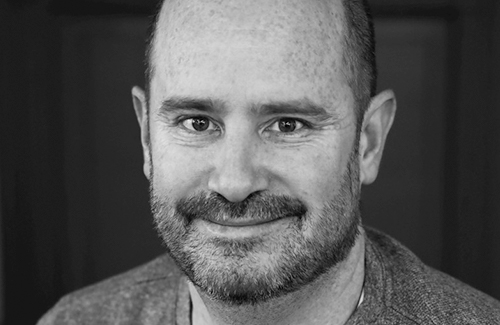
Dan Pereira
Managing Director, Commerce
Convergence of Tech, Health and Sustainability
Walking the start-up floor, it was amazing to see how many organizations are developing solutions leveraging various bio-metric sensors, haptic stimulation...
Read MoreConvergence of Tech, Health and Sustainability
Walking the start-up floor, it was amazing to see how many organizations are developing solutions leveraging various bio-metric sensors, haptic stimulation, LED / Lighting effects to develop tools that help individuals with specific physical, learning or mental conditions. From wearables that transmit sounds to vibration to help keep the hearing impaired safe by transferring noise around them to different vibration pulses, to a lamp that transmits light in a way that helps individuals with dyslexia read (Lexilife.com), or wearables that release sublet vibrations to help individuals relax, focus & sleep better (Apolloneuro.com).
The trend continued outside of the start-up area as brands develop sets of connected services that allow the collection of various data to help drive the health from “Smart clothing” (Xenoma) that measures and monitors sleep patterns to connected diapers (P&G) that monitors baby sleep and changing patterns, to finally an organization that built yet another wearable that allows consumers to scan product UPC codes to validate the product is compatible with their DNA (DNAnudge). The one product that really stuck out to me though was using technology in a different way to address some sustainability challenges around clean drinking water, in which they built a systems that extracts water from the humidity in the air (Watergen.net)

David Mitchell
CTO
Help Me Holograms, You're My Only Hope
As someone who grew up with Star Wars, I have been waiting for a device that can create tabletop holograms. I was very excited to have a private meeting with...
Read MoreConvergence of Tech, Health and Sustainability
As someone who grew up with Star Wars, I have been waiting for a device that can create tabletop holograms. I was very excited to have a private meeting with a client partner and a startup to see their new tabletop hologram tech.
Spoiler alert!
We're not quite there yet. Instead, we got to see the current state of the art in stage-ready holograms--a modern take of an 1860s parlor trick shrunken down to microwave size. Disappointed!
Turns out that Princess Leia holograms are still a ways off. The US Military and startups like Light Field Lab have work in the space, but nothing to see at CES. On the other hand, the size, scale, and number of vendors showing off 8K and up displays--not to mention curved, foldable, bendable, and/or translucent displays made me excited for other ways to engage with light and visualizations!

David Shulman
Chief Experience Officer, North America
Innovation that changes our lives
After walking the halls and seeing endless device advancements from TVs to exercise equipment, the key takeaway for me is how innovation can be applied to truly changes our lives.
Read MoreInnovation that changes our lives
After walking the halls and seeing endless device advancements from TVs to exercise equipment, the key takeaway for me is how innovation can be applied to truly changes our lives. Sure, 8k TV looks remarkable, but it’s the advances in hearing enhancements that really stuck with me. The next batch of hearing aids incorporate human-centered design with cognitive technology to enhance the sounds you need to hear while blocking the noise you don’t – all while using machine learning to anticipate and meet users’ needs in each specific environment.
Over half a billion people have hearing loss, yet less than 20% use a hearing aid. The stigma of wearing hearing aids, the high cost of the equipment and the poor performance in noisy environments leads many to choose to suffer rather than use these devices. Dozens of new companies are tackling this need and perhaps in the near future we’ll see people addressing their hearing loss with the comfort of vision correction. A great reminder to all of us that the most significant advances in technology are the ones that we use and that truly make our lives better.

Gracie Page
Emerging Technology Director
The shift from “healthcare” to “wellbeing” has truly happened
When so much ill-health is preventable, why wait for sickness to concentrate on getting better? In the West, we’ve been moving towards a preventative model for the past few years
Read MoreThe shift from “healthcare” to “wellbeing” has truly happened
When so much ill-health is preventable, why wait for sickness to concentrate on getting better? In the West, we’ve been moving towards a preventative model for the past few years, with scientific research dollars pumped into so-called precision medicine and consumer mindsets shifting from passive to active. At CES2020, this shift manifested as truly happened. It’s all about prophylactic management of our holistic wellbeing, and technology makers are really stepping up to the plate. This isn’t news, as trends like microbiomes and meditation have been part of public conversation for the past few years, but we’ve now hit an inflexion point where more than just calories counters are available to help people take active management of their well state as well as their diseased one.
We saw an evolution from myriad fingerpick blood tests towards pee-stick-based diagnostics, more fitness trackers than any sane person could handle (the Withing’s ScanWatch stole the show thanks to its apnea and atrial fibrillation detection), blood-less glucose monitors, systolic and diastolic measurement blood pressure wristbands, ECG sportswear, and even a smart belt that helps prevent hard falls in the elderly by analyzing gait patterns and other data points and alerting them to danger. Sex tech finally made an all-out appearance, mainly concentrating on the female pleasure conversation.
Brands in health, wellbeing, fitness, FMCG and even travel can tap into this societal evolution by designing moments and ways to use these new devices to greater effect. The single biggest wellness facet we’ll see explode in 2020 is sleep: it’s easy to track and there are many methods to course correct poor sleep habits. Food and drink, homewares, apparel, lighting, music and health brands can all help consumers try to get better zzzs as more smart mattresses (duxiana.com/ces), sleep trackers (sleepscore.com), headbands (usa.philips.com/c-e/smartsleep.html) and lamps (Better Sleep for Everyone | Hatch) to optimize their slumber. We’ll see a rise in the conversation around sleep for performance (whether sporting or professional), which will fuel adoption of tactics by seriously motivated early adopters, driving mass interest by Christmas 2020.
Tech makers are finally evolving past gadgets
Or trying at least. Countless products were on show that went beyond core technologies to propose actual solutions to human needs, marking a departure from the razzmatazz of making shiny boxes because we can. A prime example is BOSCH’s latest smart fridge offering, which now goes a step further than simply seeing what’s in your fridge to query a recipe database and make dinner suggestions that help to reduce food waste and save consumers time and money in their busy lives. CookingPal’s Julia smart cooking system picks up where the fridge leaves off: recipe suggestions are turned into foolproof step by step instructions for budding chefs, tired professionals and busy parents to pop into the “Julia”, a gigantic bowl that kneads, chops, cooks, steams, and more. This sharpened focus on human-centered product design uncovers potential for brands to enter these technology-driven value-add ecosystems and become an ally for a better life.

Héctor Fernandez
CEO, Mexico
The future is here
I had not been to CES ever, so my reaction focus is basically the awe-inspiring feeling of the first time. Walking through the aisles of the actual show can take forever.
Read MoreThe future is here
I had not been to CES ever, so my reaction focus is basically the awe-inspiring feeling of the first time. Walking through the aisles of the actual show can take forever. One needs to curate the content a bit before to avoid getting lost and missing the real gems. I saw flying Cars, a make-up printing machine, the next step in AR Software, the evolution of 5G enabled cloud gaming and so much more. To me, the real game changer will be the evolution of AI and how it gets incorporated into everything, from a car to a toothbrush. As an agency person, a copywriter by trade, CES is where you go to learn where the world is going and where marketing and communications should take the lead.

Hillary Carter
Director, Communications
Curating a successful agency visit at CES
I attended my first CES four years ago with one of our clients and I was completely blind to what I was about to walk into.
Read MoreCurating a successful agency visit at CES
I attended my first CES four years ago with one of our clients and I was completely blind to what I was about to walk into. I had been to Vegas several times so felt like I would have this all figured out, but of course I wanted it all to be perfect for our client, so I spent my Christmas break researching the perfect trip. I reviewed every blog I could find, I read every section of the CES website, and I scanned every single speaking engagement to try and select the moments that would be most relevant for our clients in QSR, who were also first-timers.
We arrived with an agenda that packed our day from sun-up to sun-down. But what I didn’t learn in this research is that it’s incredibly impossible to do it all. After visiting that year, I learned that you should really plan for one to two major events per day to get the most out of your time. The travel time between locations is too much to book your day back to back like we typically are in agency life. Instead, it’s best to let the day breathe just a bit, giving you more time to just soak it all in. Because it’s a lot! All good, but it’s a lot. And on top of it, you’re in Las Vegas which can make your head spin as quickly as quickly as the slot machines! Since that year, I’ve helped support the logistics of our agency visits and we’ve learned even more along the way. Here are just a few good tips if you’re planning your trip.
Tips for success:
- Plan early. Start in September or October to begin making sure you have hotels and travel arranged. CES will send out registration reminders about this time if you’ve attended in the past so it’s a good reminder to get your planning underway.
- Make arrangements for one to two events per day – a custom tour or a speaking engagement or two is the best bet. This will give you time to pop into events you might not have planned for or pop-up keynotes.
- Select one day to just visit the floor on your own. There’s so much to see and do. Put on your tennies, grab a coffee and immerse yourself in the chaos.
- Arrive earlier than your clients so you can get the lay of the land and scope out some important spots such as the Uber pickup, the taxi line, the best place to grab a quick bite in between meetings, and the coffee shop at your hotel. Your clients will thank you!
- Look into a conference room for the week for your agency to use. If you have a large group attending, it’s very likely someone will need to borrow it for a conference call or presentation during the week. This room will pay off in the end!
- Bring a water bottle (it’s the desert!) and eat when you see food. With the unpredictability of the conference, you don’t know when your next meal will be.
- Speaking of food, make dinner reservations on Open Table well in advance. The good spots book up fast and stay booked!
- Yes, you’ve heard it before but wear comfortable shoes. No one is looking at your feet, so your New Balance or whatever you’ve got is fine.
- To stay in touch with work, share photos on Instagram and make notes of things you’ve loved, make sure your phone is charged and bring a backup battery… or two!
- And have fun. It’s Las Vegas! Don’t feel bad if you make a pit stop to the Craps table or the Willy Wonka slot machine in between a meeting or after a dinner. Take in all of the sights and sounds, and if anything, it’s a good chance to rest your feet. And if Snoop Dogg is headlining the Twitter party, you go, because it’s #CES and life is too short.
Privacy concerns clash with personalization
With faster speeds for data and new technology intertwined into our daily lives, consumers are feeling concerned about the need for even more trust and transparency from brands. And as more and more smart technology is introduced at CES 2020, privacy and the security of our personal information continued to be a hot topic. VMLY&R led a discussion on ‘designing brands for the experience era’ on Wednesday afternoon at the WPP Terrace and Zach Overton from Google put it best when he said, “There’s a real value exchange here. In order for us to tell you when to leave for work because there’s a crash, or that you need an umbrella because it’s raining, we have to know where you are and where you work.
It’s about transparency and for you to tell us how much you want us to know.” He said we all love our customized curated Spotify playlists (I mean, really, how many of those top 2019 lists were shared across Instagram last month?!), but those only exist with our customer data. It’s a tradeoff that in most cases, the personalized experience always wins. Personally, for me, I appreciate the customer experience boasting with personalization. As long as it’s helping me or improving my experience, I can’t fault the technology. I welcomed Alexa into our home and I’ll gladly accept her 1:1 helpfulness, even when my kids are requesting “Ironman” for the 40th time that day.
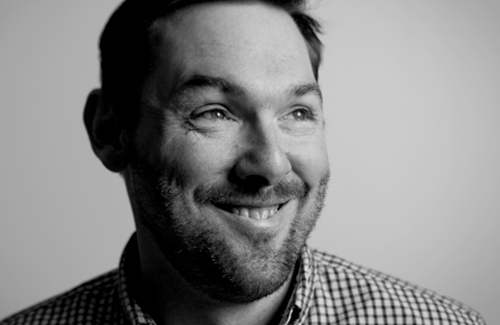
Ian Cahill
Associate Director of Innovation and Mobility
5G is on our minds, but no one is rushing all in
Talk is cheap and the talk surrounding consumer 5G products is still largely speculative. The US and its cellular carriers are still pushing construction and infrastructure for 5G networks...
Read More5G is on our minds, but no one is rushing all in
Talk is cheap and the talk surrounding consumer 5G products is still largely speculative. The US and its cellular carriers are still pushing construction and infrastructure for 5G networks, so what we saw at CES was largely conceptual. Companies like Samsung are ready to make these a reality. SK, a telecom out of Korea, has already rolled out 5G and it was refreshing to see tangible examples of where 5G and edge computing can take us.
Data collection in a friendly and transparent way
One standout at CES was the Bic Shaving group who was there to advocate for a smart connected razor. The core features included tracking strokes and pressure of strokes while shaving your face. What makes this stand apart from the other IOT devices is they were committed to growing a community of users through free devices and data-sharing, without really knowing where they wanted to take the information gathered.
Automobiles from new angles
There were a lot of cars and trucks on display at CES. Battery operated fleets, self-driving cars, Alexa-enabled everything, even a car built by Sony, who made the Walkman! But what was most refreshing was seeing new feature sets for Wi-Fi and 5G enabled use cases in vehicle. Samsung had a particularly compelling use case where 5G enabled cars integrated with existing infrastructure ground antennas to allow for faster connections and prevention in the moment.
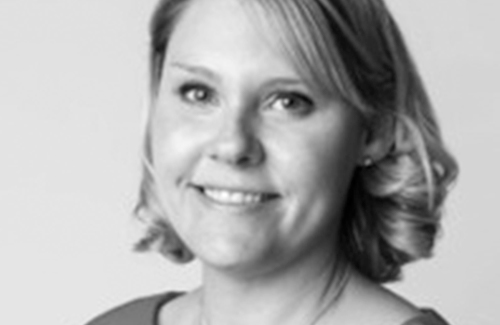
Jacquelyn Baker
Managing Director, Client Engagement
Technology evolves from ‘smart’ to effective
CES 2020 felt like an extension of 2019’s innovations, versus being an explosion of new. However, I found that evolution instead of revolution to be the most compelling aspect of what CES had to offer this year.
Read MoreTechnology evolves from ‘smart’ to effective
CES 2020 felt like an extension of 2019’s innovations, versus being an explosion of new. However, I found that evolution instead of revolution to be the most compelling aspect of what CES had to offer this year. Devices are more plentiful, and all are smart, but the data that underlines the tech is shifting for the better. No longer are common items being made ‘smart’ simply because they can, almost in a gimmicky way. Instead these devices are being supercharged with technology to truly learn about you and use that information to change behavior….the most difficult thing to do for humans. For example, the latest smart toothbrush from Oral B is designed to learn the unique characteristics of your mouth and contour itself to deliver optimal results and brushing techniques for you personally. DNA is being used to create personal profiles to help consumers shop for the best foods for their individual make up. Smart fabric measures personal health markers in the elderly to help caretakers provide the most individual patient care, and so on. Additionally, from a commerce perspective, I was intrigued to see Amazon opening its APIs to 3rd party vendors to better compete with the ecosystem offerings of Google, creating smart glasses, rings, health trackers, vehicles and more that all connect into the Alexa ecosystem. Amazon emerged as the clear consumer adoption winner in voice assistant technology a while ago, but they have been missing the natural hardware extensions that Google is afforded. 2020 is the year that disparity ends.
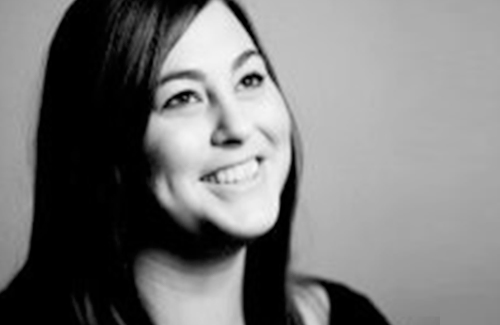
Jane Morrissey
Group Director, Client Engagement
How 5G could unlock advances in education
I came to CES with an eye out for new technology, products and ways of thinking that could help improve the approach to how our children learn in the future, and although there wasn’t a CES track specific to education...
Read MoreHow 5G could unlock advances in education
I came to CES with an eye out for new technology, products and ways of thinking that could help improve the approach to how our children learn in the future, and although there wasn’t a CES track specific to education, there were pertinent nuggets to take into consideration that were found by walking the floor and joining sessions on a whim. The most unexpected find was during the “Creativity built on 5G” session with Verizon, where the discussion led to the idea of 5G one day powering a hologram of Serena Williams giving tennis lessons.
An Olympian giving lessons as a part of the 7th grade curriculum? How cool would that be?! Maybe even Neil deGrasse Tyson giving an astronomy lesson or a medical professional teaching anatomy - the opportunities are endless. The next challenge will be figuring out how we can make 5G and hologram technology accessible so that all students can partake in this amazing experience. There is so much to look forward to as powerful and innovative thinkers push to address challenges such as these and I’m excited about the possibilities that will be unlocked for kids if we are able to harness these impressive advances in technology and ultimately make them available to all students.

Jason Schlosser
Managing Director, Technology
Products and the future are looking bright for all of us
Uber drones! 8k TV! Robot companions! CES is alive and well, delivering amazing innovations to those with the pocketbook to afford them. But what about the rest of us? It seems a lot to hope for from a product show...
Read MoreProducts and the future are looking bright for all of us
Uber drones! 8k TV! Robot companions! CES is alive and well, delivering amazing innovations to those with the pocketbook to afford them. But what about the rest of us? It seems a lot to hope for from a product show but what innovations are being delivered that have the potential to scale to the masses, beyond those that can afford the VR headset or the Nannybot? A few vendors were trying answer these questions and realize the promise of these technologies, leveraging smart home tech and robots to both protect the elderly while also ordering your groceries based on a scan of your fridge.
Though a smaller percentage of the offerings, these hidden gems are leveraging and maturing two key forms of tech that will transform us all for the better, in the same way the internet informed and mobile devices connected.
- Artificial Intelligence continues its march forward, tricking us into believing we are understood (that’s good!). Data sources used to inform are finally starting to converge and be leveraged in surprising and interesting ways. Always at the forefront, marketing and entertainment have plenty of answers for how to leverage these (media adjusting for inclement weather for example). But now companies are asking how to leverage these new collections of data to help education, communication and health at an individual level. Is there a context when a specific student is most receptive to learning? What stimulus is the most preventative for elderly ‘sundowning'? How can this be used to make us safer, smarter and healthier?
- 5G has more potential than the consumer market has yet realized. This more than anything else has the opportunity to help level the playing field (assuming we can get the towers installed everywhere). Consumers are still mostly excited about getting to watch large videos, but vendors are imagining futures where conversation can be translated on the fly Star Trek style (some of which was demoed at CES). 5g enables more immersive education, more informed health and truly (and finally) brings the internet to all of our 'things’. With the new bandwidth this technology allows for its exciting to think about how much we can offload from our devices to create smarter interactions that help us here in the real world.
No matter how interesting or powerful a specific technology is, it is nothing without the human innovation surrounding it. Excited to see how far we can push these new technologies and how people choose to bring them to bare next year on the showroom floor.

Jeff Danley
Director, Innovation & Mobility
Wearables + AI deliver personalized care
Wearable tech is helping us track everything from sleep quality, to steps, and even our heart rates. While CES brought a sea of look-alike devices, leaders in the wearable space are now leveraging AI to convert data into meaningful information...
Read MoreWearables + AI deliver personalized care
Wearable tech is helping us track everything from sleep quality, to steps, and even our heart rates. While CES brought a sea of look-alike devices, leaders in the wearable space are now leveraging AI to convert data into meaningful information and personalized recommendations. The Smart Belt Pro, by WELT, goes beyond waist measurement and monitors sitting time, overeating, step counting, and it can detect falls. What’s more, the belt can track walking speed, and how the user carries their body to help improve posture and reduce fall risk.
Healbe debuted their GoBe3 smartwatch that CES. This watch take calorie counting to the next level by analyzing your skin and the makeup of the tissue in your wrist to automatically calculate the calories consume and level of hydration. Other interesting sensors are being built into clothing, bedding, and even ingestible tablets. The future of digital health is very data-centric, personalized, and real-time!
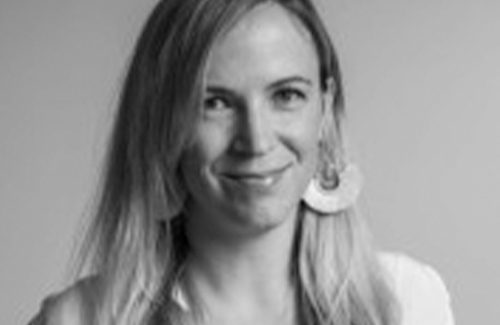
Jennifer Bonhomme
Managing Director, Strategy & Insights
The tech shaping our future needs to be about more than productivity
There is more to life than work. Yet, at CES it sometimes feels like tech wants us to work faster, harder and more often. From driverless cars with seating designed for us to have more meetings to caregiving AI-enabled companions....
Read MoreThe tech shaping our future needs to be about more than productivity
There is more to life than work. Yet, at CES it sometimes feels like tech wants us to work faster, harder and more often. From driverless cars with seating designed for us to have more meetings to caregiving AI-enabled companions to look after your elderly parents, freeing you up was about nudging you to work more. It would be great to think about how the future intends for us to spend all of this free time that tech enables, beyond productivity.
A lot of tech seems to come from a homogenous group who can engineer solutions, but don’t really understand real people.
It’s no secret that technology faces an imbalance when it comes to diversity. This shows up on the CES floor in a number of gadgets that lacked in real world value – a point that one exhibitor comedically made by showcasing a smart potato. In order to truly reflect the needs of our population through human-centered design, we need to create moonshot goals with hard metrics like those of Dell Technologies to include a more representative group designing and engineering our future tech. Dell Technologies has committed that by 2030, women will make up 50% of its workforce and 40% of its leadership, and black and Latin American workforce is 25% and leadership 15%.
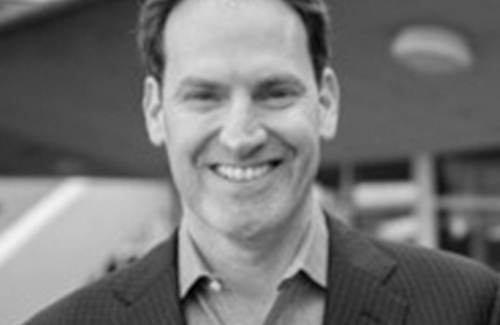
Jon Cook
CEO
Let’s not lose the essence of CES
I had not been to CES for several years, so my reactions focus on the difference in CES from the perspective of being an agency leader and for the position of the advertising / marketing industry at CES.
Read MoreLet’s not lose the essence of CES
I had not been to CES for several years, so my reactions focus on the difference in CES from the perspective of being an agency leader and for the position of the advertising / marketing industry at CES. CES – to me – reminded me of the evolution I’ve seen at the Cannes Advertising Festival. The center of Cannes was always the Palais – the area where everyone went to see the work, and attend award shows. While that remains at the heart of Cannes, as an agency person you can see entire week-long Cannes experiences to be had that don’t involve the Palais or the award shows.
Partner and platform meetings, hosted agency experiences in terraces away from the Palais, industry cocktail events, hotels filled with business meeting after business meeting. I’ve seen that same evolution at CES. The Palais equivalent at CES are the multitude of showroom exhibitor halls. Tech East, West and so on. While I personally loved my Michael Stich-expertly-curated visit to the showroom floor, I met many leaders across the agency ecosystem or brand marketers who never made it to see the technology. But still managed to have very successful and rewarding weeks at CES given the plethora of off-floor content and panels, meetings, demonstrations, social events, etc. And I can completely see how that is the case.
With so many influential people from leadership of agencies, media and technology platforms and brand marketers all in one concentrated place at one time (just like Cannes) it’s an effective and efficient use of time. And at a great time in the calendar … right at the outset of the year when plans and ways forward are being discussed. While I see this as effective use of time, I do worry about both CES and Cannes losing the purity of what they are about at their core. With Cannes, the celebration of the creativity and the idea. With CES, the raw innovation and imagination of fantastic technology. While I value a good business meeting as much as the next person, I hope we don’t lose the heart of what these events are all about! And that all of us in a fortunate position to be at CES continue to push our teams, our partners to continue to experience the purity of why we are all there.

Justin Ebert
Group Creative Director
8k TVs look almost better than real life
I was blown away by the 8k clarity of the TVs I saw in the Sony and LG exhibits. Not only were the screens enormous – beyond anything I’d seen before – but I saw a level of clarity that...
Read More8k TVs look almost better than real life
I was blown away by the 8k clarity of the TVs I saw in the Sony and LG exhibits. Not only were the screens enormous – beyond anything I’d seen before – but I saw a level of clarity that (because I wasn’t wearing my glasses) I don’t think I even fully appreciated. The picture was sharper than anything I’d seen before. And the jump was as big as when HD went to 4k. It was remarkable. Makes me excited for the future of film – both on TV, in theaters and online.

Lisa Reid
Managing Director, Advisory
Age tech at CES: (Finally) addressing the world’s largest untapped market
Seniors comprise the world’s largest untapped consumer market. And we finally got to see some tech that addressed the needs of seniors across life stages.
Read MoreAge tech at CES: (Finally) addressing the world’s largest untapped market
Seniors comprise the world’s largest untapped consumer market. And we finally got to see some tech that addressed the needs of seniors across life stages. We saw a lot of innovation in products and services that enable caregivers to deliver better care to loved ones and patients – yes, wearables that can monitor vitals, but more interestingly, wearables that could predict if a senior were at risk of falling (Welt Belt Pro) or at risk of malnutrition or depression (CarePredict).
We saw virtual caregivers (Addison Care), and care bots (Bocco-Emo and Samsung Neon) that gave us a glimpse into a world where bots and AI can deliver not just care, but companionship. And when we think of the notion of aging in place, new products and services enable seniors to keep living their best lives (think hearing aids cleverly disguised as hip earbuds and personal lubricant designed for postmenopausal women) where they want to live it (AARP HomeFit AR). Cannot wait to see the impact of seniors across all consumer tech in the coming years.

Luigi Cardone
VP, Health & Wellness, Latam
Health and wellness tech integration
While covering most of the health track exhibitors, the key takeaway is the amount of new technologies that are available now and that will significantly change the patient/consumer engagement with personalized health.
Read MoreHealth and wellness tech integration
While covering most of the health track exhibitors, the key takeaway is the amount of new technologies that are available now and that will significantly change the patient/consumer engagement with personalized health. From a type of sensor that can monitor/measure most key health markers to constant monitoring (Cardiovascular, Respiratory, Diabetes, etc. ) and that can be used in wearables, devices and even textiles. Smart watches that can track sleep apnea or measure blood pressure and even new applications to estimate vital signs though face recognition.
CES also presented new ways of patient interactions though Ai, robots, bots, ETC to improve treatment adherence, diagnose and monitoring. Everything presented at CES should push the agency to partner with our Health clients to evolve the current CX by integrating these technologies into an holistic brand experience with all stakeholders( HCPs, Patients, Hospital) and provide an evolving role into healthcare and patient experience while improving health and treatment outcomes and redefine/complement the current brand promise.
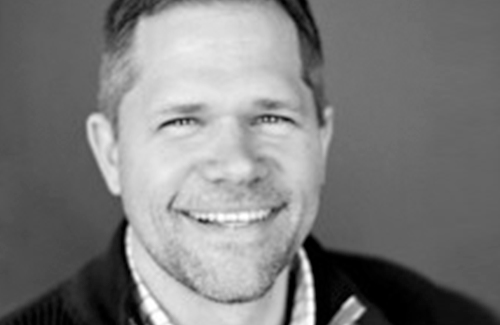
Michael Stich
Chief Business Officer, Advisory
Create content that learns
This CES, I saw a much greater integration of machine learning with devices, creating much more assisted experiences for each of us. Examples include self-calibrating eyeglasses that change as we do, smart walking sticks for the blind tailored to improve...
Read MoreCreate content that learns
This CES, I saw a much greater integration of machine learning with devices, creating much more assisted experiences for each of us. Examples include self-calibrating eyeglasses that change as we do, smart walking sticks for the blind tailored to improve each person’s walking movements, and beds that analyze our sleep states and adjust temperature, level and firmness as a result. For marketers, we’re now challenged to create content that rewards users individually, and that increases in sophistication as we learn more about them.

Najla Haddad
Executive Director, Client Engagement
The future is exciting, but do we really need all this tech in our lives?
Surprisingly, this was my first CES. I’ve wanted to attend previously and eagerly read the numerous daily round ups for inspiration. By the time I was senior enough to attend, agencies had...
Read MoreThe future is exciting, but do we really need all this tech in our lives?
Surprisingly, this was my first CES. I’ve wanted to attend previously and eagerly read the numerous daily round ups for inspiration. By the time I was senior enough to attend, agencies had clamped down on the number of attendees they were sending, and my clients didn’t see the relevance (yet) to their business. All of that has changed and regardless of your industry or category, CES has become a place for all brands. So, it seemed somewhat apt that my first day of the new work year, in a new decade was at the conference the world looks to, to better understand what the future holds. I was advised that I would see a lot of tech that was concept only and likely never going to be available for use; however, it is hard not get excited about:
- The promise Delta’s Future of Travel booth made about a highly personalized and frictionless experience that enables you to maximize the more enjoyable aspects of your commute, starting before you even leave home;
- Immersive next generation entertainment systems that make you feel like you are actually in the movie;
- Robots designed for the disabled so they can code, as well as robotics designed to provide companionship for the elderly, and;
- Colgate’s Innovation Award winning Plaqueless Pro connected toothbrush that will alert me when I’ve properly cleaned an area of my mouth (bye bye the dread of visits to the dentist!)
On the last day, amongst the intense crowds of Tech East, I serendipitously lost my tour group and as I wandered, eyes wide, I began to contemplate if all of this tech is going to make my life simpler or more complicated. Do I really need to a dispenser that controls the temperature for the perfect glass of wine? Will a fitness machine that shows me what I’ll look like if I commit to working out regularly really act as a motivator or just fuel my self-denial? What will people really do with their time whilst traveling in autonomous vehicles?
I was proud to be attending the conference in support of a heritage CPG brand, which at its first showing at CES impressively demonstrated why it remains the leader in Oral Care. However, it also made me wonder, are heritage brands showing up at CES with connected devices because they want the consumer to believe “they’ve still got it” (who really needs a Robot that delivers toilet rolls?) or have they realized that in an increasingly tech-enabled, date-rich world their business models need to evolve as well as their products.
To conclude, if the main goal for attending these conferences is to learn and be inspired then the question I’m mulling would suggest my first CES a success. Now, when can I get a Bot Chef in my kitchen? ;)

Niraj Zaveri
Group Creative Director
Cars are becoming the next hub for technology
The thing about CES that I was most impressed with was all the cars – particularly the one from Sony. It made me realize that cars are becoming the new hub for technology. They’re effectively becoming high-performance computers on wheels.
Read MoreCars are becoming the next hub for technology
The thing about CES that I was most impressed with was all the cars – particularly the one from Sony. It made me realize that cars are becoming the new hub for technology. They’re effectively becoming high-performance computers on wheels. So, it makes sense that technology companies were entering this category. And the tech they are filling their cars with is game-changing. It goes beyond just self-driving capabilities. They’re going to be the next important thing that keeps us connected to our house, our work and our personal things. It’s going to be just as integral to our lives as our home computers. I’m excited to see what comes next.
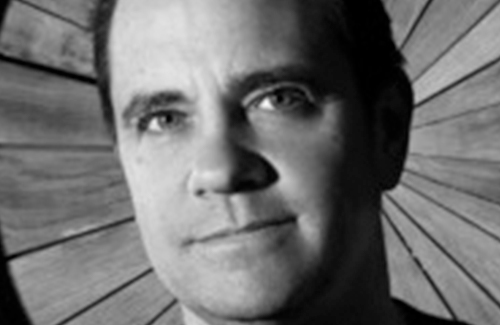
Wayne Best
Chief Creative Officer, New York
Tech is unleashing huge creative opportunities
Tech has become table stakes. Just about everything will utilize tech and work together seamlessly, especially as 5G begins to properly roll out. So, it’s not if you innovate, it’s how you innovate.
Read MoreTech is unleashing huge creative opportunities
Tech has become table stakes. Just about everything will utilize tech and work together seamlessly, especially as 5G begins to properly roll out. So, it’s not if you innovate, it’s how you innovate. The majority of things you see at CES feel like a sea of sameness. The edge will come from the people who do things differently, and create the unexpected. Sometimes that can be huge things, like the Hyundai/Uber Air Taxi. Sometimes it’s as simple as a bicycle helmet with built in lights and fall detection.
And I’m sure everyone is going to clamber for the Bartesian. (It looks like a coffee maker, only it makes single serving mixed drinks instead of coffee.) In the end, the things we will see go on from the floor of the Venetian and become part of our lives, will be the products that mix technology with creativity and good old-fashioned craft. Seeing what’s possible certainly made me excited to get back to the office and start ideating. Of course, after a few days in the loud, crazy, smelly world of Vegas, just getting home to your own bed is exciting.
Plan Ahead
2021 CES
Next year CES is scheduled Jan. 6-9, 2021 (Wednesday-Saturday). If you’re interested in attending, reach out to your client engagement lead to start planning. It’s never too early to get this on the books!
Questions

- Beth Wade
- Global Chief Marketing Officer
- 913.226-3747
- beth.wade@vmlyr.com

- Hillary Carter
- Director, Communications
- 816.225.1740
- hillary.carter@vmlyr.com





















